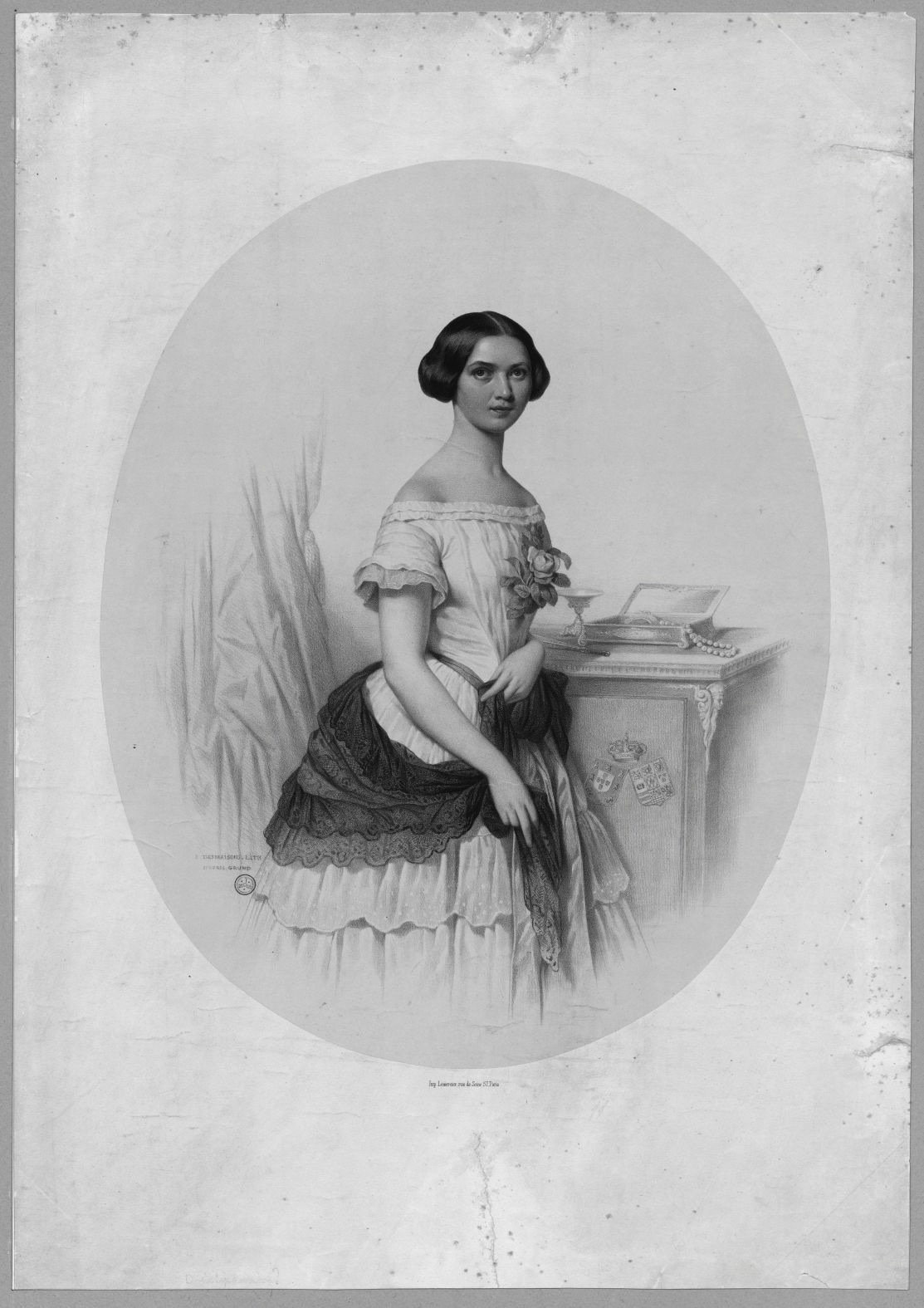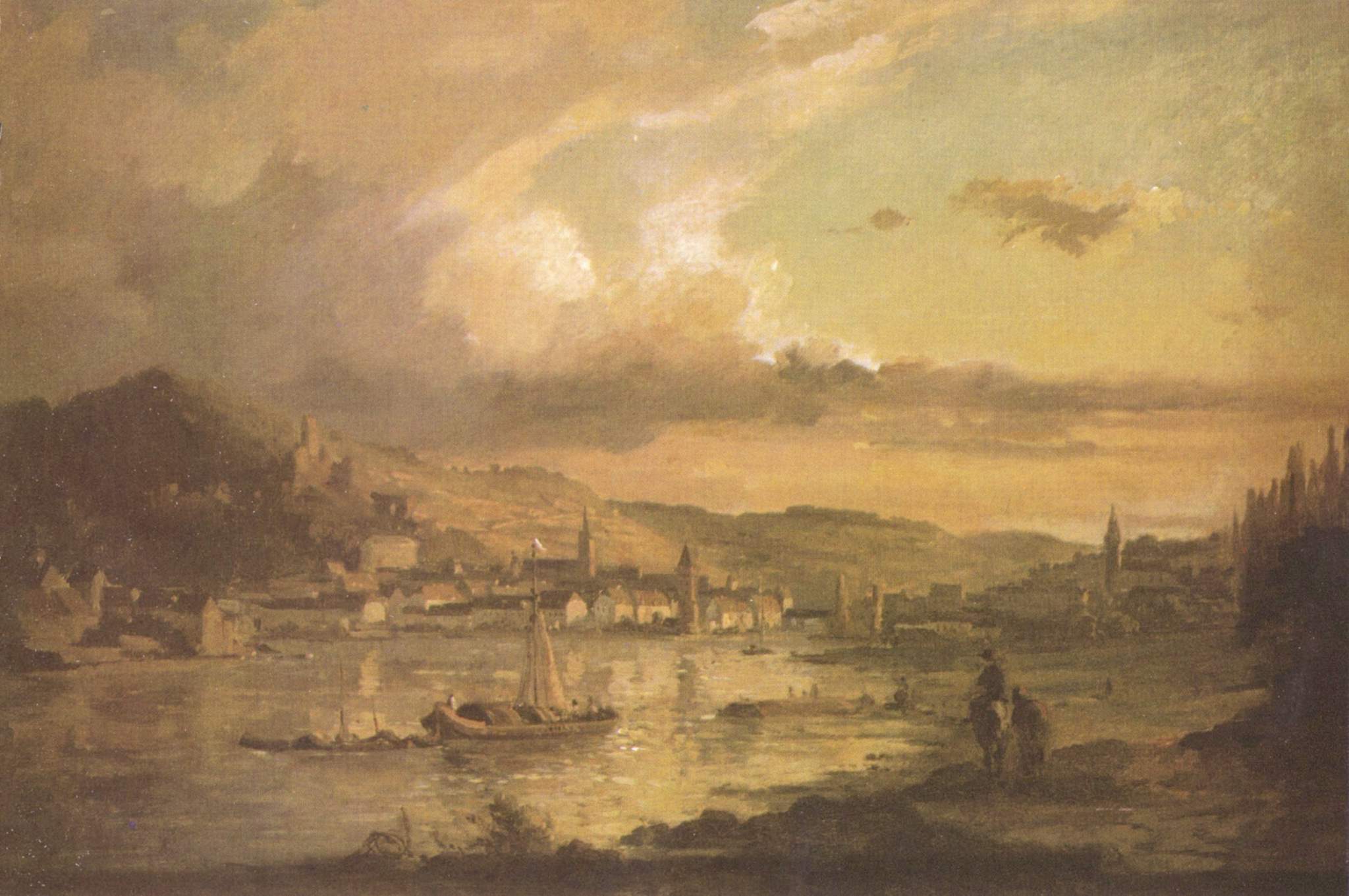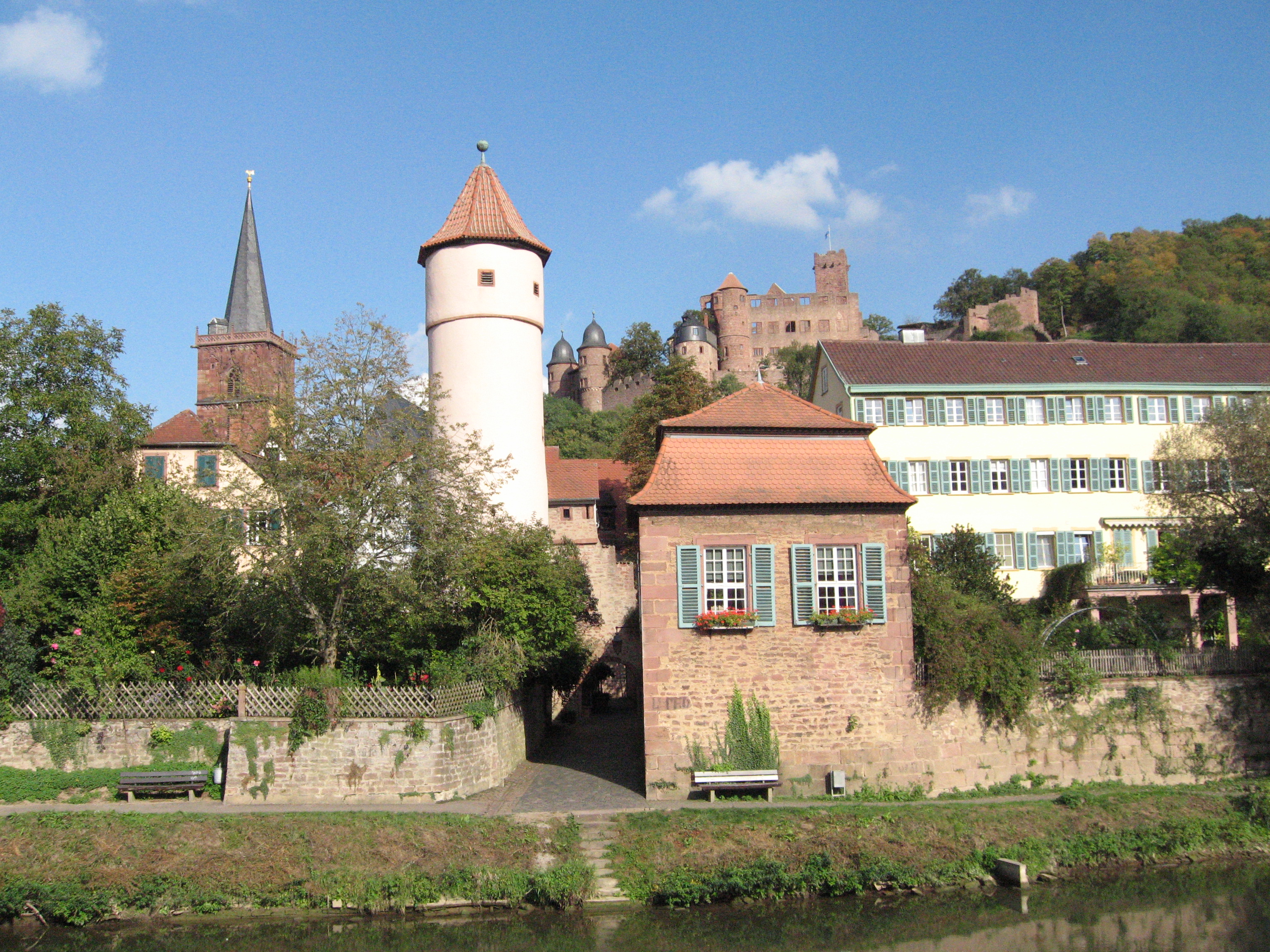|
Princess Isabel Maria Of Braganza
Princess Isabel Maria of Braganza, (Isabel Maria Alberta Josefa Micaela Gabriela Rafaela Francisca de Paula e de Assis Teresa Adelaide Eulália Sofia Carolina; 19 November 1894, Kleinheubach, Kingdom of Bavaria – 12 January 1970, Regensburg, Bavaria, Germany) was a member of the House of Braganza. Through her marriage to Franz Joseph, 9th Prince of Thurn and Taxis, Isabel Maria was also a member of the Thurn und Taxis, House of Thurn and Taxis and Princess consort of Thurn and Taxis. Family Isabel Maria was born in Kleinheubach, Bavaria, Germany, the eldest daughter of the Miguelist pretender to the Portuguese throne Miguel, Duke of Braganza and his second wife Princess Maria Theresa of Löwenstein-Wertheim-Rosenberg. Isabel Maria's father was the head of the non reigning branch of the Portuguese Royal House that had been exiled from Portugal. The exile was the result of the Portuguese law of banishment of 1834 and the constitution of 1838 which was brought about because his ... [...More Info...] [...Related Items...] OR: [Wikipedia] [Google] [Baidu] |
Thurn And Taxis
The Princely House of Thurn and Taxis (german: link=no, Fürstenhaus Thurn und Taxis ) is a family of German nobility that is part of the ''Briefadel''. It was a key player in the postal services in Europe during the 16th century, until the end of the Holy Roman Empire in 1806, and became well known as the owner of breweries and builder of many castles. The current head of the House is Albert, 12th Prince of Thurn and Taxis. The family is one of the wealthiest in Germany and has resided at St. Emmeram Castle in Regensburg since 1812. They resided in this city since 1748. They are one of the mediatised Houses for their former Sovereign Imperial counties, later mediatised to Kingdom of Wurttemberg (Principality of Buchau, now Bad Buchau), Kingdom of Bavaria and Hohenzollern-Sigmaringen. History The Tasso family (from the Italian word for "badger") was a Lombard family in the area of Bergamo. The earliest records place them in Almenno in the Val Brembana around 1200,Serassi ... [...More Info...] [...Related Items...] OR: [Wikipedia] [Google] [Baidu] |
Maria II Of Portugal
, image = Queen Maria II by John Simpson.jpg , caption = Portrait by John Simpson, 1835 , succession = Queen of Portugal , reign = , predecessor = Pedro IV , successor = Miguel I , reg-type = Regents , regent = Infanta Isabel Maria Infante Miguel , reign1 = 26 May 1834 – , coronation1 = 20 September 1834 , cor-type1 = Acclamation , predecessor1 = Miguel I , successor1 = Pedro V , reg-type1 = Co-monarch , regent1 = Fernando II , regent2 = Pedro IV , spouse = , issue = , issue-link = #Marriages and issue , house = Braganza , father = Pedro I of Brazil and IV of Portugal , mother = Maria Leopoldina of Austria , birth_date = , birth_place = São Cristóvão, Rio de Janeiro, Brazil , death_date = , death_place = Necessidades, Lisbon, Portugal , burial_date = 19 November 1853 , burial_place = Pantheon of the House of Braganza , religion = Roman Catholicism , ... [...More Info...] [...Related Items...] OR: [Wikipedia] [Google] [Baidu] |
John VI Of Portugal
, house = Braganza , father = Peter III of Portugal , mother = Maria I of Portugal , birth_date = , birth_place = Queluz Palace, Queluz, Portugal , death_date = , death_place = Bemposta Palace, Lisbon, Portugal , burial_date = , burial_place = Pantheon of the House of Braganza , signature = Assinatura D. João VI.svg , religion = Roman Catholicism Dom John VI (Portuguese: ''João VI''; 13 May 1767 – 10 March 1826), nicknamed "the Clement", was King of the United Kingdom of Portugal, Brazil and the Algarves from 1816 to 1825. Although the United Kingdom of Portugal ceased to exist ''de facto'' beginning in 1822, he remained its monarch ''de jure'' between 1822 and 1825. After the recognition of the independence of Brazil under the Treaty of Rio de Janeiro of 1825, he continued as King of Portugal until his death in 1826. Under the same treaty, he also became titular Emperor of Brazil for life, while his son, Emperor Dom Pedr ... [...More Info...] [...Related Items...] OR: [Wikipedia] [Google] [Baidu] |
Princess Sophie Of Liechtenstein
Princess is a regal rank and the feminine equivalent of prince (from Latin ''princeps'', meaning principal citizen). Most often, the term has been used for the consort of a prince, or for the daughter of a king or prince. Princess as a substantive title Some princesses are reigning monarchs of principalities. There have been fewer instances of reigning princesses than reigning princes, as most principalities excluded women from inheriting the throne. Examples of princesses regnant have included Constance of Antioch, princess regnant of Antioch in the 12th century. Since the President of France, an office for which women are eligible, is ''ex-officio'' a Co-Prince of Andorra, then Andorra could theoretically be jointly ruled by a princess. Princess as a courtesy title Descendants of monarchs For many centuries, the title "princess" was not regularly used for a monarch's daughter, who, in English, might simply be called "Lady". Old English had no female equivalent of "prince" ... [...More Info...] [...Related Items...] OR: [Wikipedia] [Google] [Baidu] |
Charles, Prince Of Löwenstein-Wertheim-Rosenberg (1834–1921)
, image =Raymundus Fürst von Löwenstein JS.jpg , caption =Charles as Father Raymundus Maria , succession = Prince of Löwenstein-Wertheim-Rosenberg , reign =3 November 1849 – 8 September 1908 , reign-type =Period , predecessor = Charles Thomas , successor =Aloysius , spouse = , issue =Princess Maria AnnaPrincess FranziskaAdelheid, Countess Adalbert Joseph of SchönbornPrincess AgnesJoseph, Hereditary Prince of Löwenstein-Wertheim-Rosenberg Maria Theresa, Duchess of Braganza Aloysius, Prince of Löwenstein-Wertheim-RosenbergAnna, Princess Felix of SchwarzenbergPrince Johannes Baptista , house = Löwenstein-Wertheim-Rosenberg , father =Constantine, Hereditary Prince of Löwenstein-Wertheim-Rosenberg , mother =Princess Agnes of Hohenlohe-Langenburg , birth_date = , birth_place =Haid, Kingdom of Bohemia, Austrian Empire , death_date = , death_place =Cologne, German Reich , burial_plac ... [...More Info...] [...Related Items...] OR: [Wikipedia] [Google] [Baidu] |
Adelaide Of Löwenstein-Wertheim-Rosenberg
, house = Löwenstein-Wertheim-Rosenberg , father = Constantine, Hereditary Prince of Löwenstein-Wertheim-Rosenberg , mother = Princess Agnes of Hohenlohe-Langenburg , birth_date = , birth_place = Kleinheubach, Kingdom of Bavaria, German Confederation , death_date = , death_place = Ryde, Isle of Wight, United Kingdom , burial_date = , burial_place = Pantheon of the Braganças, Lisbon, Portugal , occupation = , signature = , religion = Roman Catholicism Princess Adelaide of Löwenstein-Wertheim-Rosenberg (3 April 1831 – 16 December 1909) was the wife of Miguel de Bragança, the former occupant of the Portuguese throne but only following his deposition. As a widow, she secured advantageous marriages for their six daughters. Family Princess Adelaide Sofia Amelia of Löwenstein-Wertheim-Rosenberg was born in Kleinheubach, near Miltenberg, Bavaria, on 3 April 1831, Easter Sunday. She was a daughter of Constantine, Hereditary Pri ... [...More Info...] [...Related Items...] OR: [Wikipedia] [Google] [Baidu] |
Prince Miguel, Duke Of Braganza
Prince Miguel Januário of Braganza (; full name Miguel Maria Carlos Egídio Constantino Gabriel Rafael Gonzaga Francisco de Paula e de Assis Januário de Bragança; 19 September 1853 – 11 October 1927) was the Miguelist claimant to the throne of Portugal from 1866 to 1920. He used the title Duke of Braganza. Early life Miguel Januário was born in Castle Kleinheubach, near Miltenberg, Kingdom of Bavaria, on 19 September 1853 during the exile in Germany of his father, former King Miguel I of Portugal and the Algarves. His mother was Princess Adelaide of Löwenstein-Wertheim-Rosenberg. He was a grandson of King John VI of Portugal, Brazil and the Algarves and his wife, Queen Carlota Joaquina. By the Portuguese law of banishment of 1834 and the constitution of 1838, King Miguel was forbidden to enter Portugal. Therefore, he was educated in the German Confederation and in Austria-Hungary. Career He was a member of the staff of Emperor Franz Joseph I of Austria and took part i ... [...More Info...] [...Related Items...] OR: [Wikipedia] [Google] [Baidu] |
Frederick, Prince Of Hohenzollern
, succession = Prince of Hohenzollern , image = FriedrichHohenzollern1.jpg , caption = , reign=22 October 1927 – 6 February 1965, reign-type=Tenure, predecessor = William , successor = Frederick William , spouse = , issue = Princess Maria Antonia Princess Maria AdelgundePrincess Maria TheresiaFriedrich Wilhelm, Prince of HohenzollernPrince Franz Josef Prince Johann Georg Prince Ferfried , house = Hohenzollern-Sigmaringen , father =William, Prince of Hohenzollern , mother = Princess Maria Teresa of Bourbon-Two Sicilies , religion = , birth_date = , birth_place =Heiligendamm, Mecklenburg-Schwerin, German Empire , death_date = , death_place = Krauchenwies, Baden-Württemberg, West Germany , burial_place = Frederick, Prince of Hohenzollern (german: Friedrich Viktor Pius Alexander Leopold Karl Theodor Ferdinand Fürst von Hohenzollern) (30 August 1891 in Heiligendamm, Mecklenburg-Schwerin – 6 February 196 ... [...More Info...] [...Related Items...] OR: [Wikipedia] [Google] [Baidu] |
Graf
(feminine: ) is a historical title of the German nobility, usually translated as "count". Considered to be intermediate among noble ranks, the title is often treated as equivalent to the British title of "earl" (whose female version is "countess"). The German nobility was gradually divided into high and low nobility. The high nobility included those counts who ruled immediate imperial territories of "princely size and importance" for which they had a seat and vote in the Imperial Diet (Holy Roman Empire), Imperial Diet. Etymology and origin The word derives from gmh, grave, italics=yes, which is usually derived from la, graphio, italics=yes. is in turn thought to come from the Byzantine Empire, Byzantine title , which ultimately derives from the Greek verb () 'to write'. Other explanations have been put forward, however; Jacob Grimm, Jacob and Wilhelm Grimm, while still noting the potential of a Greek derivation, suggested a connection to got, gagrêfts, italics=yes, m ... [...More Info...] [...Related Items...] OR: [Wikipedia] [Google] [Baidu] |
Baden-Württemberg
Baden-Württemberg (; ), commonly shortened to BW or BaWü, is a German state () in Southwest Germany, east of the Rhine, which forms the southern part of Germany's western border with France. With more than 11.07 million inhabitants across a total area of nearly , it is the third-largest German state by both area (behind Bavaria and Lower Saxony) and population (behind North Rhine-Westphalia and Bavaria). As a federated state, Baden-Württemberg is a partly-sovereign parliamentary republic. The largest city in Baden-Württemberg is the state capital of Stuttgart, followed by Mannheim and Karlsruhe. Other major cities are Freiburg im Breisgau, Heidelberg, Heilbronn, Pforzheim, Reutlingen, Tübingen, and Ulm. What is now Baden-Württemberg was formerly the historical territories of Baden, Prussian Hohenzollern, and Württemberg. Baden-Württemberg became a state of West Germany in April 1952 by the merger of Württemberg-Baden, South Baden, and Württemberg-Hohenzollern. The ... [...More Info...] [...Related Items...] OR: [Wikipedia] [Google] [Baidu] |
Wertheim Am Main
Wertheim (East Franconian: ''Wärde'') is a town in southwestern Germany, in the state of Baden-Württemberg with a population of around 23,400. It is located on the confluence of the rivers Tauber and Main. Wertheim is best known for its landmark castle and medieval town centre. Geography Wertheim is the most northerly town in the state of Baden-Württemberg. It is situated at the confluence of the rivers Tauber and Main, on the Main's left bank. It borders on the Odenwald hills and the Spessart range to the north across the river Main. Wertheim is located in the Main-Tauber district. Neighboring communities The following towns and communities border on Wertheim, listed clockwise starting in the east: Holzkirchen, Helmstadt and Neubrunn (all district Würzburg, Bavaria), Werbach and Külsheim (both Main-Tauber district), Neunkirchen ( district Miltenberg, Bavaria), Freudenberg (Main-Tauber district), Stadtprozelten and Faulbach (both Miltenberg district) and Hasloch, ... [...More Info...] [...Related Items...] OR: [Wikipedia] [Google] [Baidu] |
Bronnbach
Wertheim (East Franconian: ''Wärde'') is a town in southwestern Germany, in the state of Baden-Württemberg with a population of around 23,400. It is located on the confluence of the rivers Tauber and Main. Wertheim is best known for its landmark castle and medieval town centre. Geography Wertheim is the most northerly town in the state of Baden-Württemberg. It is situated at the confluence of the rivers Tauber and Main, on the Main's left bank. It borders on the Odenwald hills and the Spessart range to the north across the river Main. Wertheim is located in the Main-Tauber district. Neighboring communities The following towns and communities border on Wertheim, listed clockwise starting in the east: Holzkirchen, Helmstadt and Neubrunn (all district Würzburg, Bavaria), Werbach and Külsheim (both Main-Tauber district), Neunkirchen ( district Miltenberg, Bavaria), Freudenberg (Main-Tauber district), Stadtprozelten and Faulbach (both Miltenberg district) and Haslo ... [...More Info...] [...Related Items...] OR: [Wikipedia] [Google] [Baidu] |

.png)






